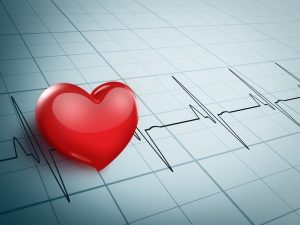How hospitals are improving response times for cardiac events

August 14, 2017 by Medigroup
Getting the right care to the right person at the right time is critical for hospital operations. However, it’s not always possible to treat patients quickly enough, particularly with fast-acting events like cardiac arrest and heart attacks. Fortunately, hospitals and first responders are adopting new techniques to improve response times and increase the potential for successful recovery.
Record-setting speed of patient care
Time is of the essence, and medical professionals can’t afford delays when treating a heart attack. U.S. hospitals have averaged under one hour for opening blocked arteries, setting a record for how quickly this procedure is performed. According to the Waco Tribune-Herald, more than 93 percent of patients now have their arteries opened within 90 minutes of their arrival. This is important, as quick attention will lessen the chance of permanent damage. In fact, the risk of dying goes up 42 percent if care is delayed half an hour beyond the 90 minute recommendation.
Use of paramedics have helped to significantly improve patient care prior to arriving at the hospital. They do extensive electrocardiograms and call results ahead to get the angioplasty room ready. This can help save heart muscle and ensure that doctors are ready to receive the patient upon arrival.

Hospitals have set a new record for heart attack treatment times.
Drones delivering defibrillators in emergencies
During cardiac arrest, things can happen very quickly, and it’s not always possible for emergency services to get to the patient’s location on time. A study by JAMA noted that out-of-hospital cardiac arrests have survival rates of 8 to 10 percent, and defibrillation can be an important factor for increasing the likelihood of recovery. JAMA’s research involved drones carrying automated external defibrillators to simulated OHCA, where a bystander can use it to treat a cardiac event until paramedics arrive. Drones reduced response times for people that suffered OHCAs by 16 minutes and can be a critically important tool in boosting response capabilities.
While this technology certainly has promise, it still has a long way to go before full use. For example, the study only looked at a small number of flights in short distances in good weather. It’s still unclear how successful this effort would be in real emergency situations, and more test flights are needed to evolve capabilities and deliver the best outcomes.
“Hospitals are revising their communications systems to improve their responsiveness.”
Ensuring better treatment and quality outcomes
The initiatives started by hospitals to cut down on heart attack treatment times is a significant step forward in improving successful recovery. More medical institutions are revising their communications and alert systems to improve their responsiveness to patient requests and effectively address emergency situations. Medscape noted that something as simple as callback protocols and patient request logs can help bolster reaction times and ensure that issues have been addressed. Some patterns within these logs might even help with scheduling efforts and visiting rounds.
Events like a heart attack are scary for everyone involved, but medical professionals must be ready to serve these patients. With the right tools on hand, doctors can improve response times and address the situation appropriately.















